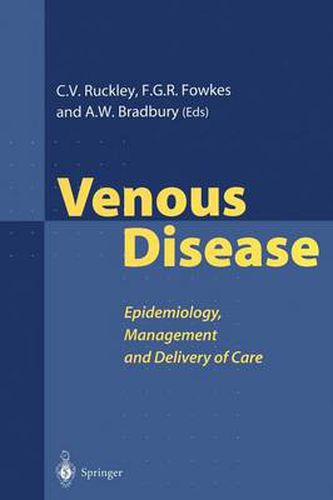Readings Newsletter
Become a Readings Member to make your shopping experience even easier.
Sign in or sign up for free!
You’re not far away from qualifying for FREE standard shipping within Australia
You’ve qualified for FREE standard shipping within Australia
The cart is loading…






This title is printed to order. This book may have been self-published. If so, we cannot guarantee the quality of the content. In the main most books will have gone through the editing process however some may not. We therefore suggest that you be aware of this before ordering this book. If in doubt check either the author or publisher’s details as we are unable to accept any returns unless they are faulty. Please contact us if you have any questions.
Varicose veins are a very common problem. The precise aetiology of primary varicose veins remains unclear. It seems likely from the available evidence that inherited structural weakness combined with haemodynamic or microcirculatory abnormalities eventually lead to reduced vein wall elasticity, dilatation and the formation of varicosities. Increasing age, female gender, parity and occupation may all promote the development of varicose veins in susceptible individuals. Further clinical and experimental studies are necessary if the relative contribution of each of these factors is to be fully elucidated. References 1. Editorial. The treatment of varicose veins. Lancet 1975;ii:311. 2. Prerovsky I. Diseases of the veins. World Health Organisation, internal communication, MHO-PA 10964. 3. Weddell JM. Varicose veins: pilot study. Br J Surg 1969;23:179-186. 4. Hobsley M. Pathways in surgical management. 2nd ed. London: Edward Arnold, 1986. 5. Browse NL, Burnand KG, Lea Thomas M. Diseases of the veins. London: Edward Arnold, 1988. 6. Logan WPD, Brooke EM. The survey of sickness. Studies on medical and population subjects no. 12. London: General Register Office, 1957. 7. The committee on the Danish national morbidity survey. The sickness survey of Denmark. Copenhagen, 1960. 8. US Department of Health. Education and welfare: national health survey 1935-1936. Washington, DC, 1938. 9. The Department of National Health and Welfare and the Dominion Bureau of Statistics. Illness and health care in Canada. Canadian Sickness Survey 1950-1951. Ottawa, 1960.
$9.00 standard shipping within Australia
FREE standard shipping within Australia for orders over $100.00
Express & International shipping calculated at checkout
This title is printed to order. This book may have been self-published. If so, we cannot guarantee the quality of the content. In the main most books will have gone through the editing process however some may not. We therefore suggest that you be aware of this before ordering this book. If in doubt check either the author or publisher’s details as we are unable to accept any returns unless they are faulty. Please contact us if you have any questions.
Varicose veins are a very common problem. The precise aetiology of primary varicose veins remains unclear. It seems likely from the available evidence that inherited structural weakness combined with haemodynamic or microcirculatory abnormalities eventually lead to reduced vein wall elasticity, dilatation and the formation of varicosities. Increasing age, female gender, parity and occupation may all promote the development of varicose veins in susceptible individuals. Further clinical and experimental studies are necessary if the relative contribution of each of these factors is to be fully elucidated. References 1. Editorial. The treatment of varicose veins. Lancet 1975;ii:311. 2. Prerovsky I. Diseases of the veins. World Health Organisation, internal communication, MHO-PA 10964. 3. Weddell JM. Varicose veins: pilot study. Br J Surg 1969;23:179-186. 4. Hobsley M. Pathways in surgical management. 2nd ed. London: Edward Arnold, 1986. 5. Browse NL, Burnand KG, Lea Thomas M. Diseases of the veins. London: Edward Arnold, 1988. 6. Logan WPD, Brooke EM. The survey of sickness. Studies on medical and population subjects no. 12. London: General Register Office, 1957. 7. The committee on the Danish national morbidity survey. The sickness survey of Denmark. Copenhagen, 1960. 8. US Department of Health. Education and welfare: national health survey 1935-1936. Washington, DC, 1938. 9. The Department of National Health and Welfare and the Dominion Bureau of Statistics. Illness and health care in Canada. Canadian Sickness Survey 1950-1951. Ottawa, 1960.